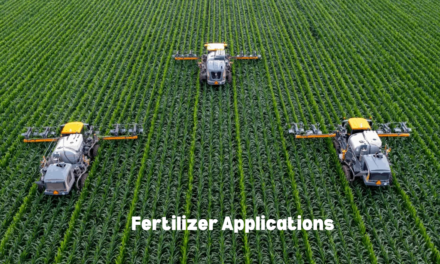Explosives play a critical role in the mining and construction industries, enabling efficient excavation, resource extraction, and structural demolition. These materials allow for precise, controlled, and economical operations, making them indispensable tools in these sectors. Here’s an overview of their roles and applications:
Role of Explosives in Mining
1. Rock Fragmentation
- Objective:
- Break rock formations into manageable pieces for easier extraction and processing.
- Application:
- Open-Pit Mining:
- Large-scale blasting to remove overburden and access ore deposits.
- Example: Iron ore, coal, and gold mining.
- Underground Mining:
- Controlled blasts create tunnels or remove ore from confined spaces.
- Example: Copper and zinc mining.
- Open-Pit Mining:
- Benefits:
- Maximizes ore recovery while minimizing damage to surrounding structures.
2. Overburden Removal
- Objective:
- Remove soil and rock layers (overburden) covering valuable ore deposits.
- Application:
- Use of bulk explosives for large-scale removal in strip mining operations.
- Examples:
- Ammonium nitrate-fuel oil (ANFO) for cost-effective blasting.
3. Mineral Liberation
- Objective:
- Facilitate the separation of valuable minerals from waste rock.
- Application:
- Controlled blasting to create fractures for easier crushing and grinding.
- Examples:
- Gold and diamond mining where mineral liberation is crucial.
4. Tunnel and Shaft Development
- Objective:
- Create tunnels and shafts for underground access to ore deposits.
- Application:
- Blasting is used to excavate pathways and ventilation systems.
- Examples:
- Drill-and-blast method in underground coal mining.
5. Seismic Exploration
- Objective:
- Use controlled explosions to generate seismic waves for mapping underground resources.
- Application:
- Identify potential oil, gas, and mineral deposits.
- Examples:
- Small explosive charges in exploration geophysics.
Role of Explosives in Construction
1. Controlled Demolition
- Objective:
- Safely and efficiently dismantle structures, such as buildings, bridges, and towers.
- Application:
- Use of shaped charges and precision timing to achieve implosions.
- Examples:
- Demolition of obsolete skyscrapers or industrial facilities.
2. Excavation
- Objective:
- Remove large volumes of earth and rock for construction projects.
- Application:
- Road Construction:
- Blasting through mountains and hard rock for highways.
- Dams and Reservoirs:
- Excavating rock foundations for large-scale water infrastructure.
- Road Construction:
- Examples:
- Controlled blasting for the construction of tunnels and reservoirs.
3. Tunneling
- Objective:
- Create tunnels for transportation, utilities, and infrastructure development.
- Application:
- Blasting is often used in complex rock formations where mechanical excavation is inefficient.
- Examples:
- Tunnel boring for subways, railways, and hydroelectric projects.
4. Quarrying
- Objective:
- Extract building materials such as limestone, granite, and marble.
- Application:
- Controlled blasting to break rock into blocks or aggregates.
- Examples:
- Limestone for cement production and granite for construction.
5. Foundation Work
- Objective:
- Prepare sites for deep foundations or large structures.
- Application:
- Explosives are used to remove hard rock and create space for foundation laying.
- Examples:
- Blasting for skyscraper foundations or bridge pylons.
Types of Explosives Used
In Mining:
- Bulk Explosives:
- Ammonium nitrate-fuel oil (ANFO) for large-scale blasting.
- Emulsion Explosives:
- Water-resistant explosives for wet conditions in open-pit and underground mining.
- Slurry Explosives:
- Gel-based explosives for high-energy blasting.
- High Explosives:
- Dynamite and blasting caps for precise blasting needs.
In Construction:
- Shaped Charges:
- Used for precise cutting in demolition.
- Low Explosives:
- Black powder and deflagrating explosives for controlled excavation.
- Blasting Gelatins:
- High-energy explosives for tunneling and quarrying.
Advantages of Using Explosives
For Mining:
- Efficiency:
- Accelerates the extraction process compared to mechanical methods.
- Cost-Effectiveness:
- Reduces labor and machinery costs.
- Precision:
- Controlled blasting minimizes waste and improves ore recovery.
- Access to Hard Rock:
- Makes mining viable in geologically challenging environments.
For Construction:
- Time Savings:
- Quick removal of materials compared to traditional excavation.
- Controlled Impact:
- Precision blasting reduces the risk of collateral damage.
- Cost-Effective Solutions:
- Reduces the need for heavy machinery and labor-intensive excavation.
Challenges and Safety Concerns
In Mining:
- Fly Rock and Debris:
- Uncontrolled debris from blasting can pose risks to workers and equipment.
- Mitigation: Use of blast mats and controlled techniques.
- Ground Vibration:
- Excessive vibration can damage nearby structures.
- Mitigation: Vibration monitoring and optimized blast designs.
- Toxic Fumes:
- Explosives release gases like NOx and CO, posing health risks.
- Mitigation: Adequate ventilation in underground mines.
In Construction:
- Collateral Damage:
- Risk of damage to adjacent structures during demolition.
- Mitigation: Precise planning and controlled detonation.
- Safety Risks:
- Handling and storage of explosives require stringent protocols.
- Mitigation: Proper training, storage, and regulatory compliance.
Regulations and Standards
- Occupational Safety and Health Administration (OSHA):
- Ensures safe handling and use of explosives.
- Mine Safety and Health Administration (MSHA):
- Sets safety standards for blasting in mining operations.
- Environmental Regulations:
- Manage emissions, waste, and environmental impact of blasting activities.
Future Trends in Explosive Use
- Green Explosives:
- Development of environmentally friendly materials to reduce toxic byproducts.
- Digital Detonation Systems:
- Use of electronic detonators for precise timing and reduced vibration.
- Blast Optimization Software:
- Advanced modeling to maximize efficiency and minimize environmental impact.
- Nano-Explosives:
- Nano-enhanced explosives for higher energy density and precision.
Conclusion
Explosives are indispensable in the mining and construction industries, enabling efficient resource extraction, infrastructure development, and demolition. While their use brings significant benefits, it also requires rigorous safety measures, precise planning, and adherence to regulations to minimize risks and maximize efficiency. With advancements in technology, the industry is moving toward safer, greener, and more precise explosive applications.
Hashtags
#MiningExplosives #ConstructionExplosives #ExplosivesInMining #BlastingInConstruction #ExplosivesForExcavation #MiningApplications #MiningAndBlasting #QuarryBlasting #ExplosivesForMining #UndergroundBlasting#DemolitionExplosives #ConstructionBlasting #ControlledBlasting #BuildingDemolition #InfrastructureExplosives #ExcavationExplosives #EfficientBlasting #SafeExplosivesUse #BlastingSafety #ControlledDetonations#EcoFriendlyExplosives #SustainableBlasting #GreenBlastingTech #LowEmissionExplosives #ExplosiveWasteManagement #BlastingTechnology #SmartBlasting #AdvancedExplosivesTech

















